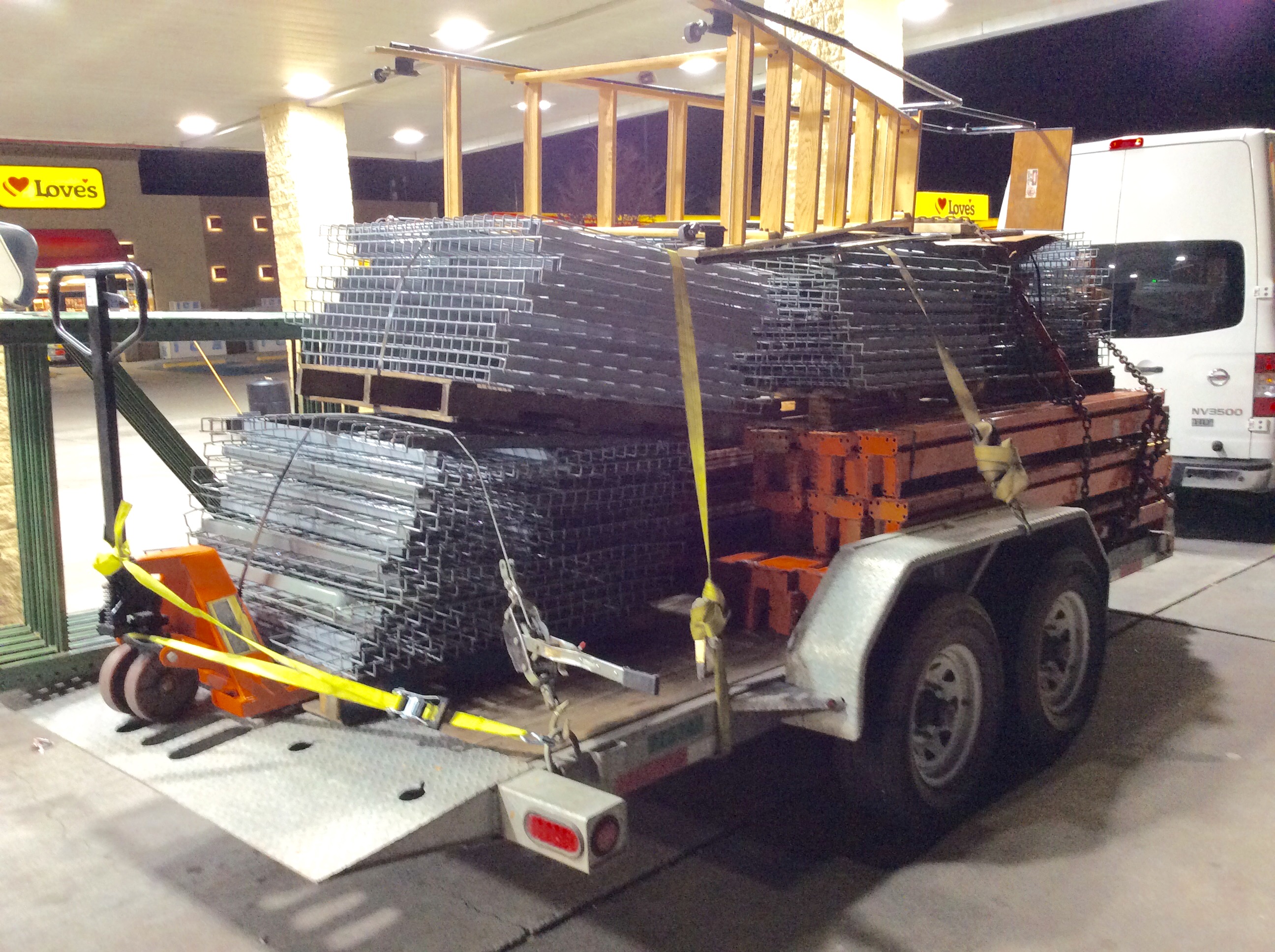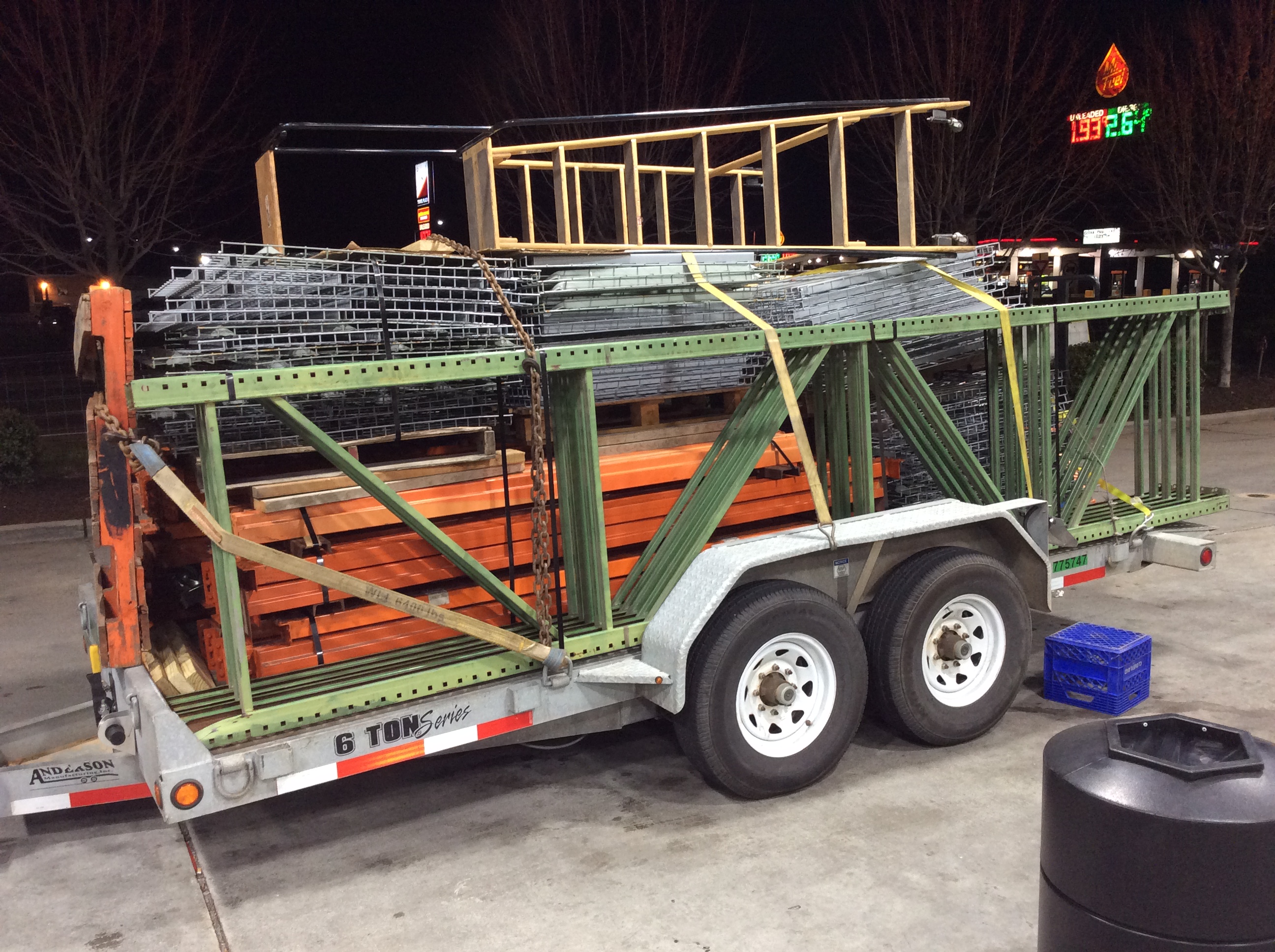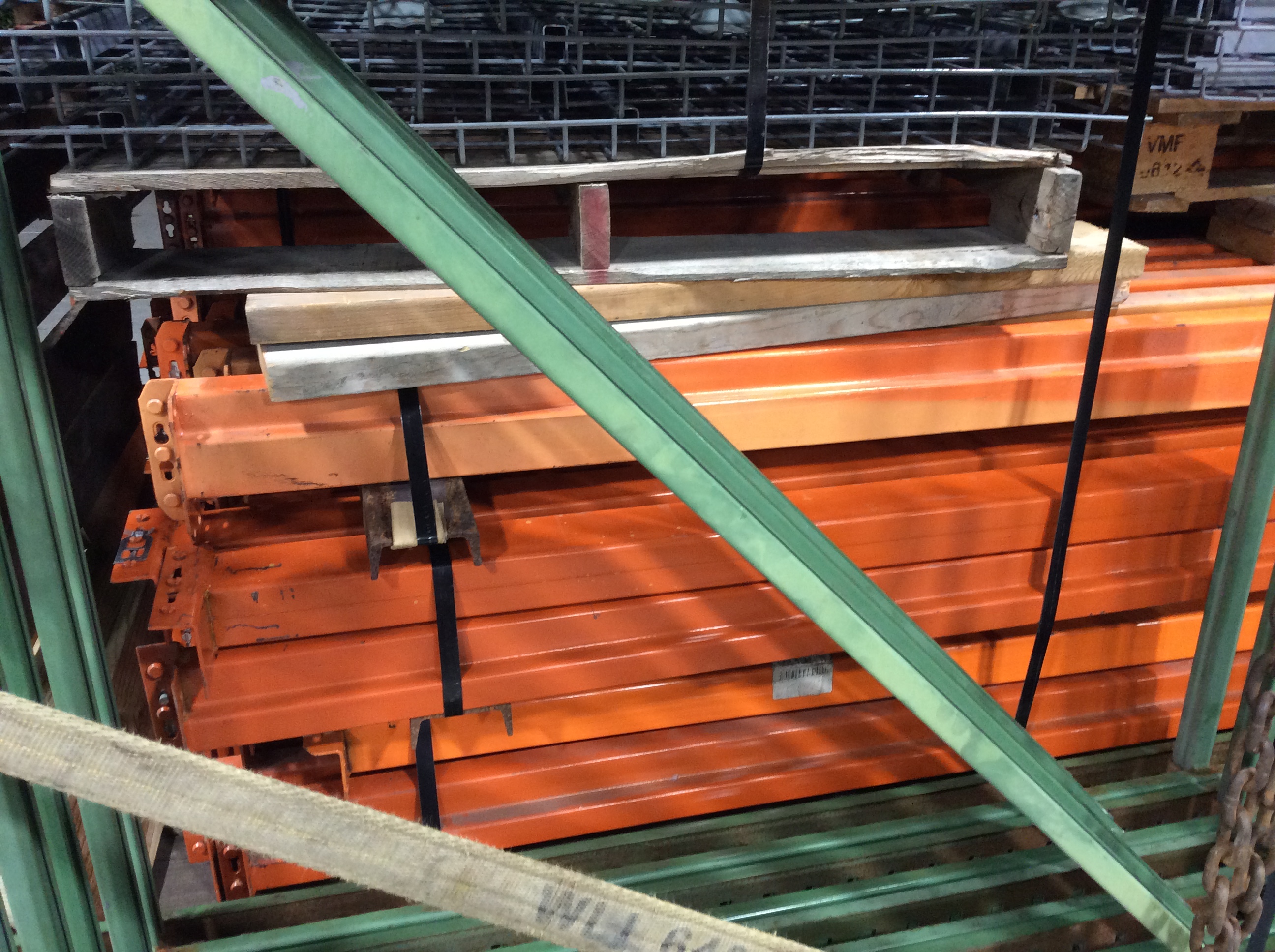I'm going to haul a set of pallet Racks on a 17' Sunbelt rental trailer, only trailer I can rent that should have enough room if Racks are arranged well. The Racks have 5 ea. 18' x 42" uprights, about 60 ea. 8' x 4" beams, and hundreds of 4' x 42" wire support platforms that go between two parallel beams front to back. I don't think weight is an issue, the trailer is good for 7500 lbs or so. I'm looking for advice from someone who has moved a lot of pallet rack pieces like this load. First instinct is to lay beams flat on sides touching each other and use ratchet-strap and/or chain and tensioner on both stacks of beams (one in front 8' of trailer and one in rear 8'.). Then stack the 5 uprights on top of the beams. Then stand the screens vertically in the "compartments" made by the uprights, and put those that won't fit horizontal in whatever space is left. Strap all down. We'll have 3/4" steel strapping and clips etc. on hand in case it looks like that would help somehow.
A variation that might work better would be to make square x-sec bundles of beams and strap each bundle at each end. This would ride better and ease loading and unloading (forklifts at both ends of trip) but load prep time would increase by hour or two.
Better ideas?
A variation that might work better would be to make square x-sec bundles of beams and strap each bundle at each end. This would ride better and ease loading and unloading (forklifts at both ends of trip) but load prep time would increase by hour or two.
Better ideas?
Last edited:





